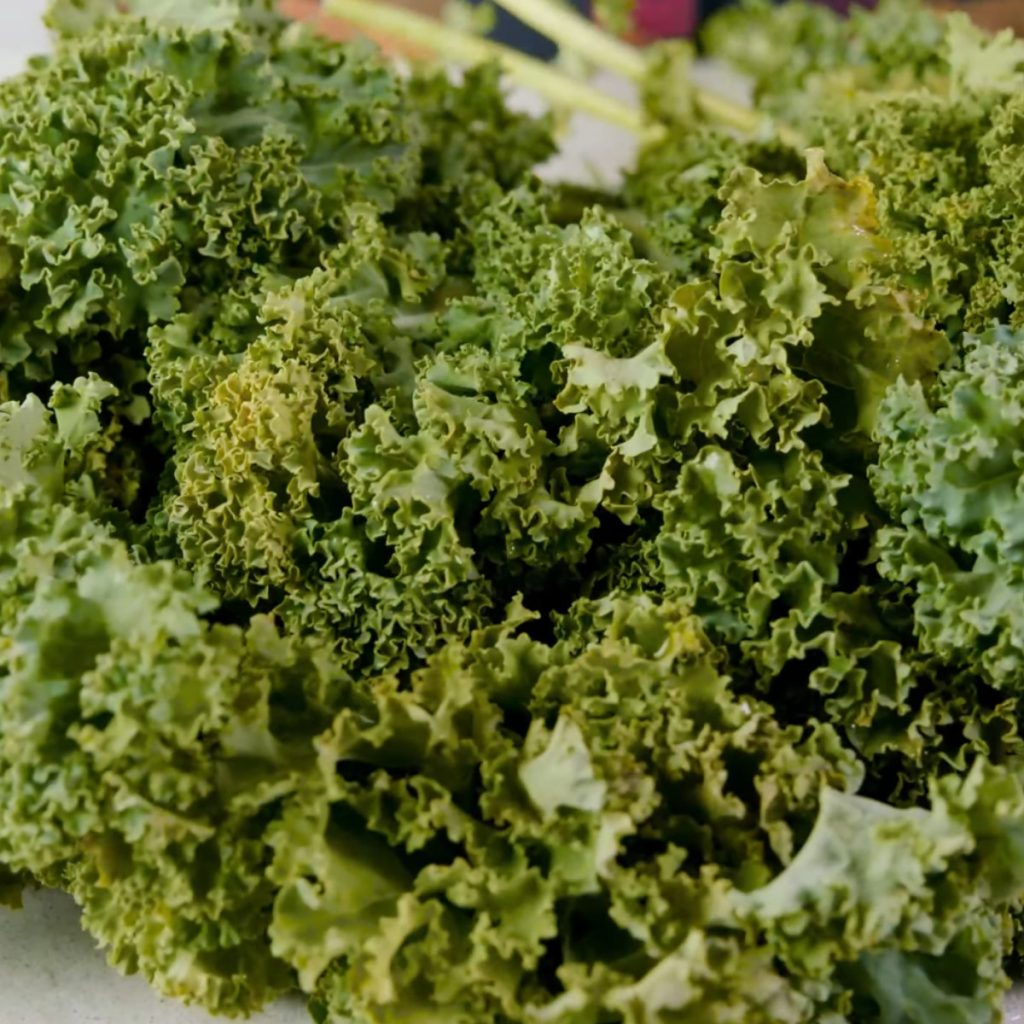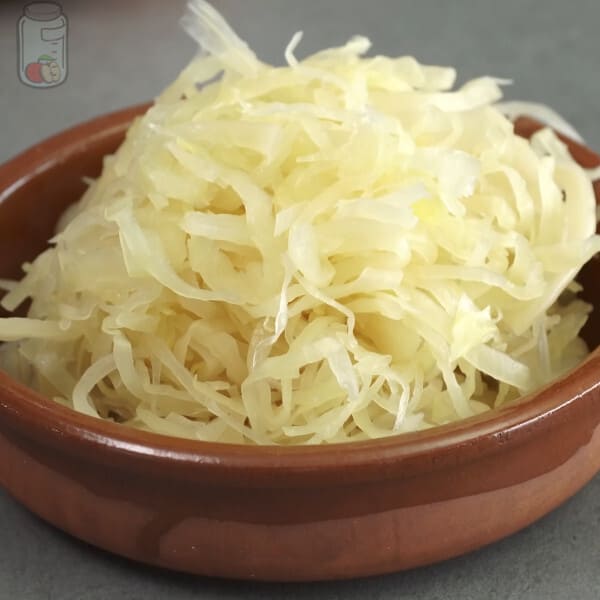Kale or leaf cabbage is a type of cabbage whose leaves do not come together to form a head as it grows; instead, it expands, giving it an appearance a little similar to lettuce. If you prepare kale regularly, you can’t miss this tutorial, where you will learn how to store kale.
You must keep kale refrigerated for 3 to 5 days, depending on how fresh they are, but you can freeze them for 8 or 12 months and dehydrate them for up to a year at room temperature.

Next, I will explain in detail the proper way to preserve kale.
How to select kale
Buying kale in the best condition is key to making it last you a long time, so be bold and ask how fresh it is or check its condition well.
Fresh kale will have green leaves that are bright and firm. So discard those with yellowish leaves because soon they will end up wholly withered. Also, don’t select kale with lots of holes in its leaves that are moistened or moldy.
You will also want to select an entire “cabbage” instead of those with separate leaves or those that come pre-cut. Those kales with small leaves have a tender texture and a somewhat lighter taste.
How to store kale in the fridge
Kale is composed of resistant leaves; if you chop them, unlike other plants, it will not affect so much in their conservation time. You can store it in the following way:
- Step 1: Chop and wash the kale leaves.
With your hands, go tearing off the leaves, holding the stem firmly. Then put them in a cup of water for you to wash, or you can set the leaves in a colander and rinse them under tap water.
- Step 2: Dry the leaves thoroughly.
This is a crucial step since you do not want moisture to remain on the leaves. So you can strain them and then arrange them on a clean towel, then roll up the towel and squeeze with great care to avoid bruising the leaves. You can use several towels if necessary.
Although if you have a salad spinner, you can use it to dry them better.
Then, you can leave them on a tray with paper towels or a rack for a few minutes so that the air finishes drying the excess water.
- Step 3: Wrap the kale leaves and bag them.
When kale leaves are dry, layer them on absorbent paper, and wrap them carefully. You can repeat this with several sheets.
Then, put the wrapped leaves inside a bag or container, taking care not to squeeze them too much.
- Step 4: Store the kale in the fridge.
Place the leaves in a not very cold place, such as the vegetable drawer or near the door of your refrigerator. Thus, the kale will remain in good condition for 3 to 5 days inside the fridge. [1]
You can also store the whole bunch of kale, but in this case, I do not recommend washing them. Instead, dry it before wrapping it with a clean kitchen towel or a paper towel. Then, bag it and put it in the vegetable drawer. You will maintain it for the same period.
If you have cooked the kale leaves, wait for them to cool before putting them in an airtight container, and this case, it is convenient for you to place them at the bottom of the fridge, where the cooked kale leaves will last about 2 or 3 days refrigerated.
How to freeze kale
Can kale be frozen? Of course, but to maintain its quality, you must blanch it first. So the steps would be as follows:
- Step 1: Chop and wash the kale leaves.
Remove the kale leaves in your hands, holding the stem firmly. Put the leaves in a bowl of water for you to wash or place them in a strainer and wash them under tap water.
- Step 2: Whiten kale leaves.
Take a pot of water to the stove. When it boils, add a pinch of salt and stir well to dissolve, and then you can add the kale leaves. Leave them for a minute or two (no more) before taking them out and putting them in a large bowl with cold water and ice cubes to stop the cooking.
If you do not want to blanch the kale leaves, what you can do instead is dry the leaves well, as I explained in the previous section.
- Step 3: Strain and dry the leaves.
Strain the bleached kale leaves and put them in a salad spinner to dry them well. If you do not have one, leave them for a while in the colander to drain well, and then put them on a clean kitchen towel, wrap and squeeze carefully.
- Step 4: Freeze the kale for two hours.
In a tray with waxed paper, parchment, or a nonstick sheet, place the kale sheets next to each other, which are not too close, and do not put others on top of it.
Put the tray in the freezer and let them freeze for two hours. When they are frozen, transfer them to an airtight bag or container that you can put in the freezer.
- Step 5: Write the storage date of the kale.
Put the storage date on a label or a strip of tape, and attach it to the container or bag, or you can write the date directly on the container.
- Step 6: Store the kale in the freezer.
This way, the kale can be in the freezer for 8 to 12 months. Then, you can cook the kale directly frozen or add it to a smoothie.
But if you want to thaw the kale, leave it at room temperature in a bowl of cold water for a few hours, or you can pass the kale overnight to the fridge. However, this will be different from fresh, and you will not be able to freeze again.
How to dehydrate kale
There is also the alternative of dehydrating the leaves of the kale. However, it will not be a substitute for fresh or thawed kale in those recipes that require it.
Although there are other foods to which you can add dehydrated kale, or you could eat them as a snack, you would have to season them to your liking or crush them and turn them into a condiment.
Well, to dehydrate kale, you need to do the following:
- Step 1: Wash the kale.
Here you do not need to separate the leaves from the stem, only from the bunch that holds them together, because you will need the stem to dry them at room temperature. But if you use an oven or food dehydrator, then yes, separate the leaves from the stem with your hands.
Subsequently, proceed to wash the leaves with plenty of water. You can use a bowl or put them under the tap.
- Step 2: Dry the leaves thoroughly.
Drain the kale leaves well; use a salad spinner if you have it. If you don’t, leave them for a while in the colander and shake them well. Then arrange them on a clean towel and roll and squeeze carefully to avoid bruising the leaves.
- Step 3: Dehydrate the kale.
You can tie a few kale leaves by its stem and hang them upside down in a ventilated place where sunlight does not hit directly. After a week or two, they should be ready, although they will take longer if it is not very hot.
To make this process faster, you can use a food dehydrator. Just adjust its temperature to 125°F (about 52°C), arrange the leaves without the stem in their trays side by side, without stacking them, and leave them for 4 or 5 hours.
If you want to use an oven, preheat it to the lowest temperature that allows you, and on a tray with parchment paper, arrange the kale leaves without piling them up and leaving a little space between them. Bake for 2 or 3 hours.
You’ll know kale is dehydrated when it’s crispy and brittle.
- Step 4: Transfer the dehydrated kale to a bag or container.
If you used the oven or food dehydrator, wait for them to cool before putting them in an airtight bag or container. Then, you can crush dehydrated kale to make a powder and add it to everything you want.
- Step 5: Store the kale dehydrated.
Put the dehydrated kale in a place that stays dry, cool, and where the light does not hit it. This way, the dehydrated kale can be at room temperature for a year.
If you want to preserve the dehydrated kale for a bit longer, store it in the freezer, in a suitable container, for 18 to 24 months.
How do you know if the kale got bad?
One of the signs that kale is bad is its appearance. So when you see white or black spots or lint, it will have been damaged as it developed mold.
Or if the kale is very viscous and you can easily pierce it, discard it, as it is rotten.
You also shouldn’t eat kale with a foul smell and taste, such as rancid or fermented. And if the leaf is wholly withered, it will have already lost flavor and nutrients.
Why is kale spoiled?
Kale is a type of cabbage, which, like the others, is composed mainly of water, which is why it is not resistant to storing at room temperature.
This high-water composition also makes kale the perfect nest for fungi and bacteria if not stored properly.
Besides, when harvested, it will begin its oxidation. That is, the kale leaves will start to wither and turn brown. And since it is a plant, it will be targeted by animals and insects if left too long in the open air, and if they can reach the kale, they will devour it and pollute it.
How long does kale last?
| Product | Duration |
| Chilled fresh kale | 3 – 5 days |
| Refrigerated cooked kale | 2 – 3 days |
| Frozen Kale | 8 – 12 months |
| Dehydrated kale at room temperature | 1 year |
| Dehydrated kale in the freezer | 18 – 24 months |
What is the best way to preserve kale?
The best way to preserve kale is to store it in the fridge; this way, it will retain its freshness and consistency, even for a few days.
You can freeze the kale if you have bought too much and know that you will only eat some in a few days. However, its texture will change, and it may reduce its flavor.
You can also dehydrate the kale. However, you should keep in mind that in this way, you can only use it as a condiment or eat it as a snack since few recipes require dehydrated kale.
But if you want to know how you can preserve some other vegetables, you can go to our search engine and write whatever you want to store because there is a vast list of topics that deal with this point. Or you can browse and read the titles that catch your eye.







